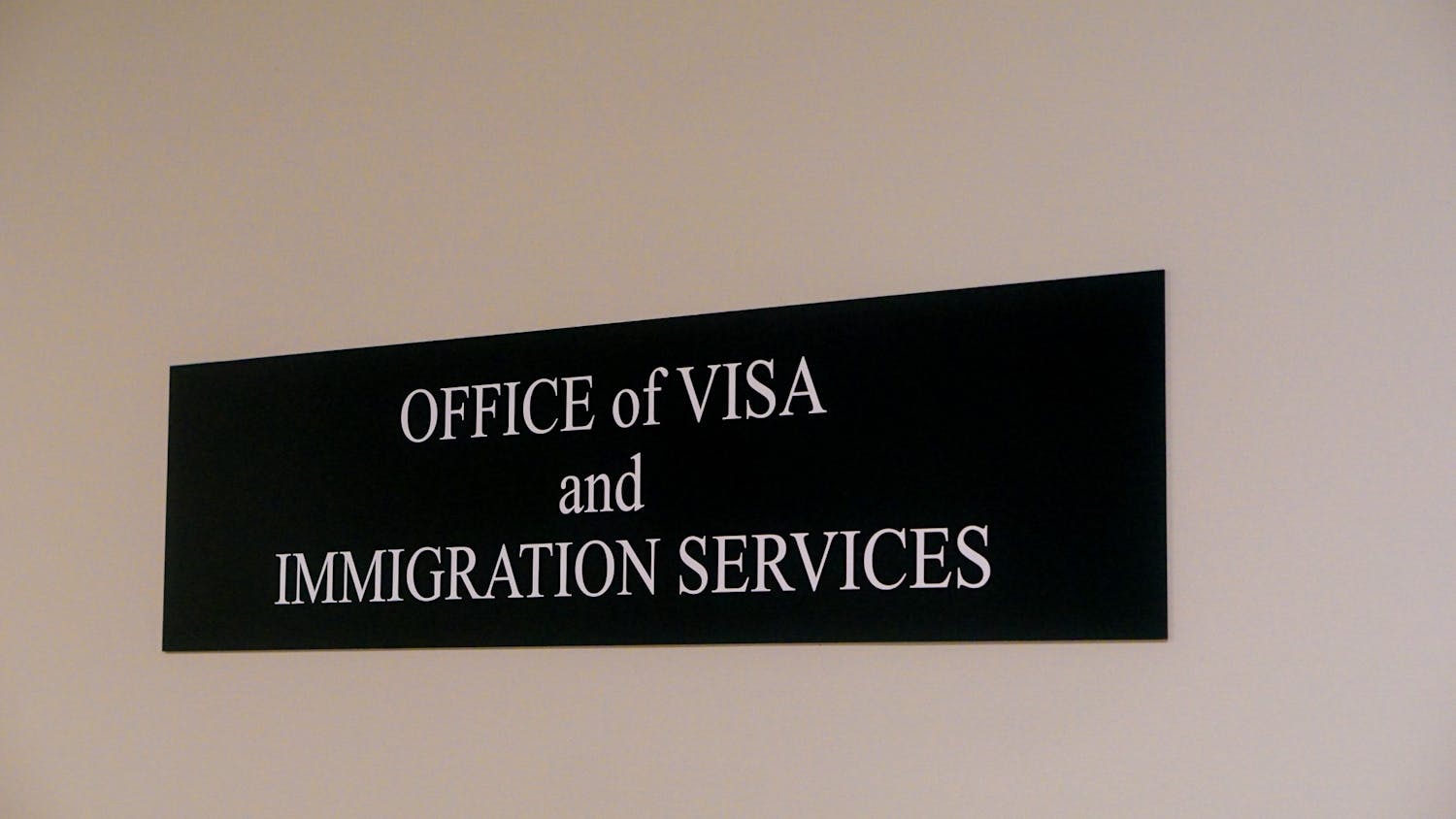Dartmouth traditions are born and razed by the light of the Homecoming bonfire.
Known as Dartmouth Night for its first 100 years, the event now known as Homecoming has created countless customs held dear by Dartmouth students in the new millennium.
Today, the term "Dartmouth Night" refers only to the first evening of the celebration, when President of the College James Wright addresses the College community from the steps of Dartmouth Hall.
Another traditional speaker from those same steps is the captain of the football team, who this year will orate to his audience about Saturday's game versus Harvard University.
Dartmouth Night first came into existence in the fall of 1895, as then College President William Jewett Tucker emphasized class spirit in an address to the entering freshman class and welcomed that century's '99s to the College.
A year later, Dartmouth students embraced "Men of Dartmouth," written by Richard Hovey of the Class of 1885 as their alma mater.
Originally intended as a time to remember alumni and read their telegrams from around the world, Homecoming now serves as an opportunity for graduates in the vicinity of the College to return and relive the revelry of their college days, if only for a weekend.
But the tradition has not always been continuous. The celebration of Dartmouth Night was suspended during the 1940s as war-time restrictions forbade the reading of international telegrams, terminating the central tradition of the ceremony.
Emotional fallout from another war caused the cessation of Homecoming merrymaking as disenchanted students from the Vietnam War era cancelled the festival in deference to those students unable to participate from their military posts overseas.
After defeating Manchester College in a baseball game late in the 19th century, spectators spontaneously gathered burnable items, setting them aflame on the Green and creating the very first Homecoming Bonfire.
The bonfire -- now Homecoming's feature event -- was first officially organized after a resounding 34-0 Dartmouth football victory over Amherst College in 1893.
Freshmen from all corners of the campus will descend upon the blazing Green tonight to run circles around the bonfire, continuing a tradition born in 1904, when pajama-clad students did just that under the eyes of special guests Winston Churchill and Lord Dartmouth.
Hijinks generally ensue around the building of the bonfire, but in 1968, the process was especially dampened.
Replacing the kerosene normally used to light the bonfire with water, several Dartmouth Outing Club members looked on in amusement as freshmen tried desperately to light the fire. Eventually, the DOC jokesters let the freshmen in on their trick and pointed them to where the kerosene was hidden.
The first major celebration of Dartmouth Night occurred in 1901 when the College gathered to honor the 100th anniversary of the graduation of Daniel Webster from the College.
Other staples of the modern Dartmouth Homecoming include tonight's Freshman Sweep in which the entire Class of 2004 makes a frenzied tour of the campus, ending on the Green with the lighting of the bonfire.
Though sweeping students are now systematically lead through the campus by student representatives of the Green Key Honor Society and Safety and Security officers, the tradition was not always so peaceful.
Violence is not uncommon on Homecoming Weekend, as the events of 1984 and 1992 can attest.
In those years, near-riots were started when intoxicated students wielding baseball bats and hockey sticks brawled with officers from the Hanover Police Department.
Traditionally, freshman students stood guard over their carefully-constructed bonfire throughout the nights preceding Homecoming Weekend in order to protect it from upperclassmen, who customarily endeavored to destroy it.
Nowadays, Safety and Security officers watch over the structure at night.
Before the College's move to admit female students in 1972, scores of women were imported to the campus to provide dates for the male students confined to the polar regions of New England.
A decade and a half later, the Homecoming of 1987 saw a group of female students who called themselves the "Womyn to Overthrow Dartmouth" sporting witches' garb pelt eggs at a speaker's podium.
In 1991, students bewailing a new College policy banning open alcohol sources handcuffed themselves to the bonfire, shouting "We want kegs! We want kegs!"



